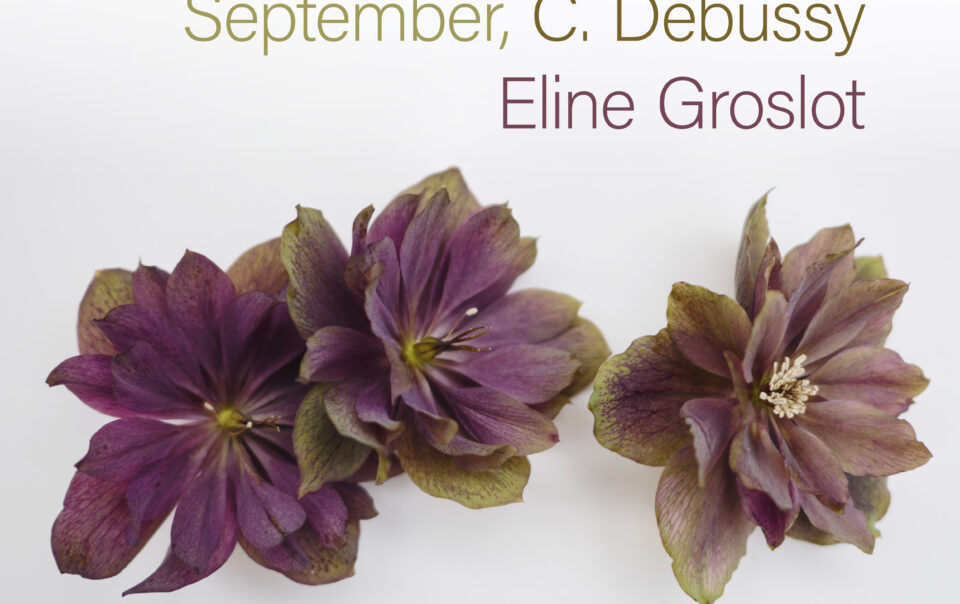(english below)
Als componisten te rade gaan bij harpisten met vragen over notatie, technische mogelijkheden, etc. krijgen ze vaak te horen dat iets niet erg ‘harpistiek’ geschreven is, niet harp conform. Wat men dan bedoelt, is dat het aanvoelt alsof de compositie niet voldoende vanuit de eigenheid van het instrument gedacht werd.
Iedere componist die al wat oeuvre voor harp achter de kiezen heeft en aan de piano componeert, merkt snel dat wat goed klinkt op piano, op harp vaak niet hetzelfde gewenste effect heeft.
In mijn vorige blog stipuleerde ik al enkele verschillen: de demp-problematiek, de beperkte articulatiemogelijkheden, het gebrek aan kracht van het instrument, de basnoten die toch veel meer boventonen produceren en zo de klank enigszins diffuus maken, kortom meer verschillen dan gelijkenissen.
In het geval van Debussy worden we geconfronteerd met een paradox: aan de ene kant is de manier waarop hij de harp gebruikt ongelofelijk flatterend voor het instrument en aan de andere kant kunnen we zijn manier van schrijven voor de harp en de piano als erg verwant beschouwen.
Betekent dit dat we voorzichtiger moeten zijn met het label ‘harpistiek’? Verdient de definitie van dit woord een verfijning? Is alles wat we met acht vingers kunnen spelen harp conform of nemen we daar een hele flauwe bocht?
Debussy’s muziek wordt meestal in één adem met het impressionisme genoemd en daarbij wordt de opkomende interesse voor de harp aan datzelfde impressionisme gekoppeld.
Toen Monet op het hoogtepunt van het impressionisme zijn Impression, soleil levant(1872) schilderde, wandelde Debussy nog maar net zijn tienerjaren binnen en tegen de tijd dat Debussy zijn grootste werken schrijft, moeten we vaststellen dat we veeleer in de Art nouveau beland zijn.
Uit Art nouveau begrijpen we zoveel: verloedering maar ook een nieuwe start, het overdreven koesteren van zeldzame dingen en luxe, decadentie ook. Kunstenaars gingen ijverig op zoek naar nieuwigheden om te lezen, te zien en te horen.
Voor de klassieke muziek werd het belang van de individuele klank zoveel groter, maar ook het gebruik van nieuwe ‘exotische’ instrumenten die men daarvoor nauwelijks opmerkte. Is dit de reden waarom Debussy de harp probeerde te introduceren, dat ze plots zoveel opduikt in zijn grote symfonische werken?
Hij toonde ons in ieder geval dat hij niet alleen prachtig voor de piano kon creëren, maar ook in zijn orkestraties een nieuwe kunstenaar van zijn tijd was.
De combinatie fluit, altviool en harp was alleszins een pionier in zijn bezetting. Nog te bedenken dat Debussy zijn eerste schetsen voor de hobo optekende en niet voor de altviool maakt het nog duidelijker dat de zoektocht naar nieuwe timbres een onderwerp van zijn dagdagelijkse compositiepraktijk was.
When composers turn to harpists for advice about notation or technical possibilities, they are often told that what they wrote is not very ‘harpistic’.
What one means is, that it feels like the composition isn’t thought enough out of the instrument.
Composers who already have some harp works under their belts and the methodology of writing from behind the piano, soon find out that what works well for the piano doesn’t always give the same satisfying result on harp.
In one of my previous blogs I already stipulated some differences: the issue of damping, the articulation options, but also the (lack of) strength of the instrument, de bass notes that obfuscate the sound because of the overtones, in short, more differences than similarities.
As far as Debussy is concerned we are confronted with a paradox: on the one hand he uses the harp in an extremely flattering way and on the other hand we can consider his way of writing for harp and piano very similar.
Does this mean we should be more careful in using the term ‘harpistic’? Should we put some more refining in its definition? Is all repertoire playable with eight fingers, harp consistent or is stating this too simplistic?
Debussy’s music is often mentioned in one breath with impressionism and the upcoming interest in the harp at that time is awarded the same art movement.
When Monet painted his Impression, soleil levant(1872) at the apex of impressionism, Debussy was only just entering his teens and by the time Debussy writes his absolute masterpieces we are far more travelling through the Art nouveau.
So many attestations can be given to Art Nouveau: degeneration but also a new beginning, excessive cherishing of rare objects, luxury, decadence also. Artists were assiduously looking for new things to read, to see and to listen to.
In classical music the importance of the individual sound gained an enormous importance as well as the use of ‘exotic’ instruments, which before were hardly noticed.
Would this be the reason that Debussy tried to introduce the harp, and therefore arises in his large symphonic works?
In any case he shows us that aside from creating amazingly for the piano, he was also a new artist of his time in his orchestrations.
The mix of flute, viola and harp was a wayshower in the chamber music scene. Considering that his first sketches were with an oboe in mind in stead of viola, it makes it all the more clear that looking for new timbres was subject of his daily composition practice.

